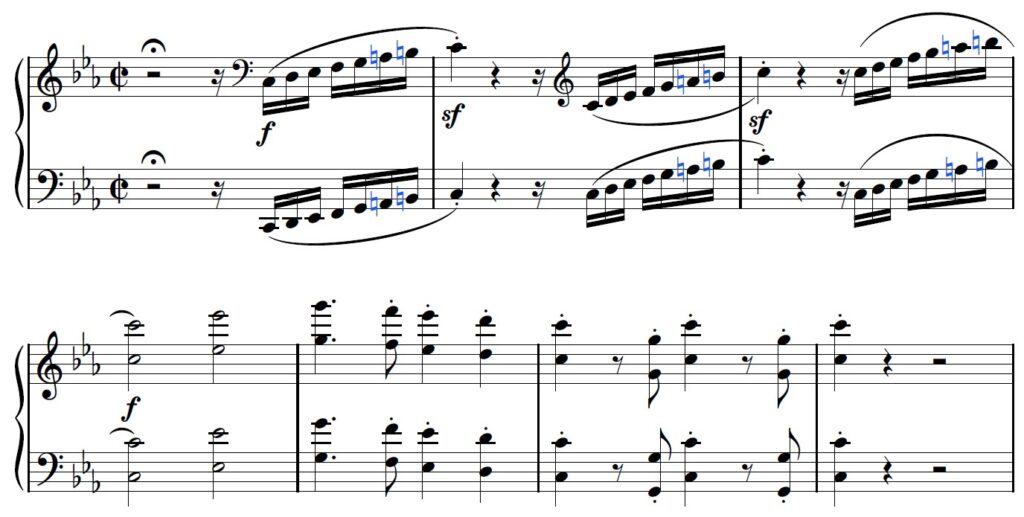Salford Piano Studio
The Minor Scales follow a similar formula to that of the Major scale.
Unlike the Major scale, we have three different versions of a minor scale:
- Natural
- Melodic
- Harmonic
Natural Minor Scale
Let’s start with A Minor, as it has no sharps/flats.
The Natural Minor Scale is made of two Tetrachords.
Minor Tetrachord: Tone – Semitone – Tone
Upper Minor Tetrachord: Semitone – Tone – Tone
A tone joins the two Tetrachords:
Tone – Semitone – Tone – Tone – Semitone – Tone – Tone
Here are the Natural Minor Scales from A-G:
Melodic And Harmonic Minor Scales
The Melodic Minor Scale is a Natural Minor Scale with a raised Sixth and Seventh.
The Harmonic Minor Scale is a Natural Minor Scale with a raised Seventh.
When we raise a note by a semitone it’s either:
- A natural note raised with a sharp (♯)
- A flat note (♭) raised with a natural (♮), which cancels the flat
Let’s compare all three A Minor scales.
A Minor Natural
A – B – C – D – E – F – G – A
A Minor Melodic
- Raised 6th and 7th
A – B – C – D – E – F♯ – G♯ – A
A Minor Harmonic
- Raised 7th
A – B – C – D – E – F – G♯ – A
Example
Beethoven’s famous piano concerto No. 3 starts with ascending C Minor Melodic scales.
